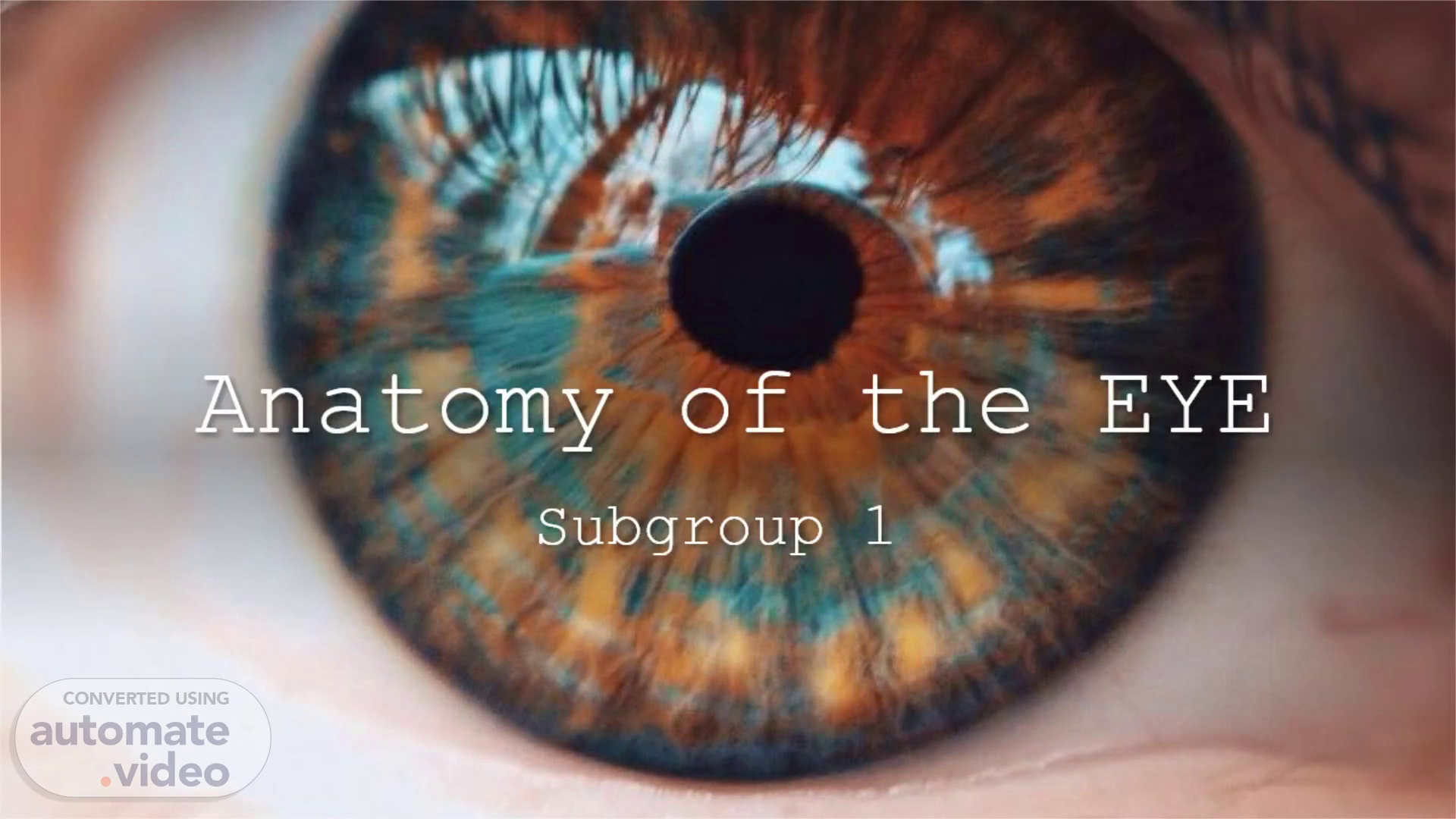Page 1 (0s)
Anatomy of the EYE. Subgroup 1.
Page 2 (7s)
Basic Structures of the Eye. Diagram, schematic Description automatically generated.
Page 3 (15s)
Diagram Description automatically generated. Cornea.
Page 4 (37s)
Diagram Description automatically generated. Diagram Description automatically generated.
Page 5 (1m 7s)
Cornea injury. Diagram, schematic Description automatically generated.
Page 6 (1m 38s)
Sclera. Diagram, schematic Description automatically generated.
Page 7 (1m 48s)
Aqueous Humour.
Page 8 (1m 53s)
Iris. A picture containing music Description automatically generated.
Page 9 (2m 13s)
[Audio] There are two types of iris muscles that control the size of the pupil. They are: Circular sphincter pupillae – constricts pupil on contraction Radial dilator pupillae – dilates pupil on contraction The colour of the pupil becomes pale yellow when the lens becomes opaque or cloudy in case of cataract..
Page 10 (2m 40s)
Lens. The lens is a clear, curved disk that sits behind the iris and in front of the vitreous of the eye. It allows the eye to focus on objects at varying distances by changing its shape . The primary function of the lens is to bend and focus light to create a sharp image. To do that, the lens uses the help of ciliary muscles to stretch and thin out(relax) when focusing on distant objects, or to shrink and thicken (contract) when focusing on near objects..
Page 11 (3m 6s)
Ciliary Muscle.
Page 12 (3m 12s)
Vitreous Humour.
Page 13 (3m 18s)
Retina. Diagram Description automatically generated.
Page 14 (3m 27s)
Retina Functions.
Page 15 (3m 33s)
Retinal Detachment. Diagram Description automatically generated.
Page 16 (3m 39s)
Optic Nerve.
Page 17 (3m 45s)
Eye Muscles. There are six eye muscles that control eye movement. One muscle moves the eye to the right, and one muscle moves the eye to the left. The other four muscles move the eye up, down, and at an angle..
